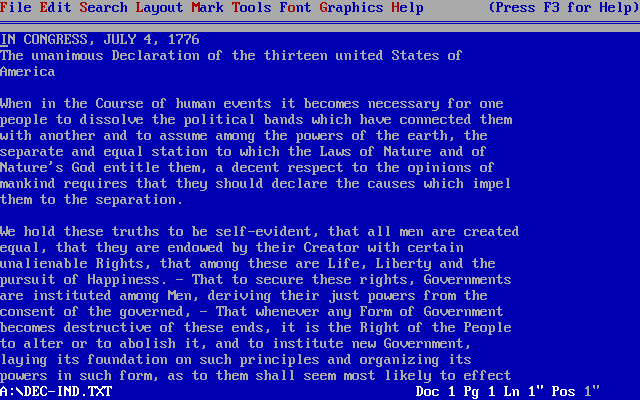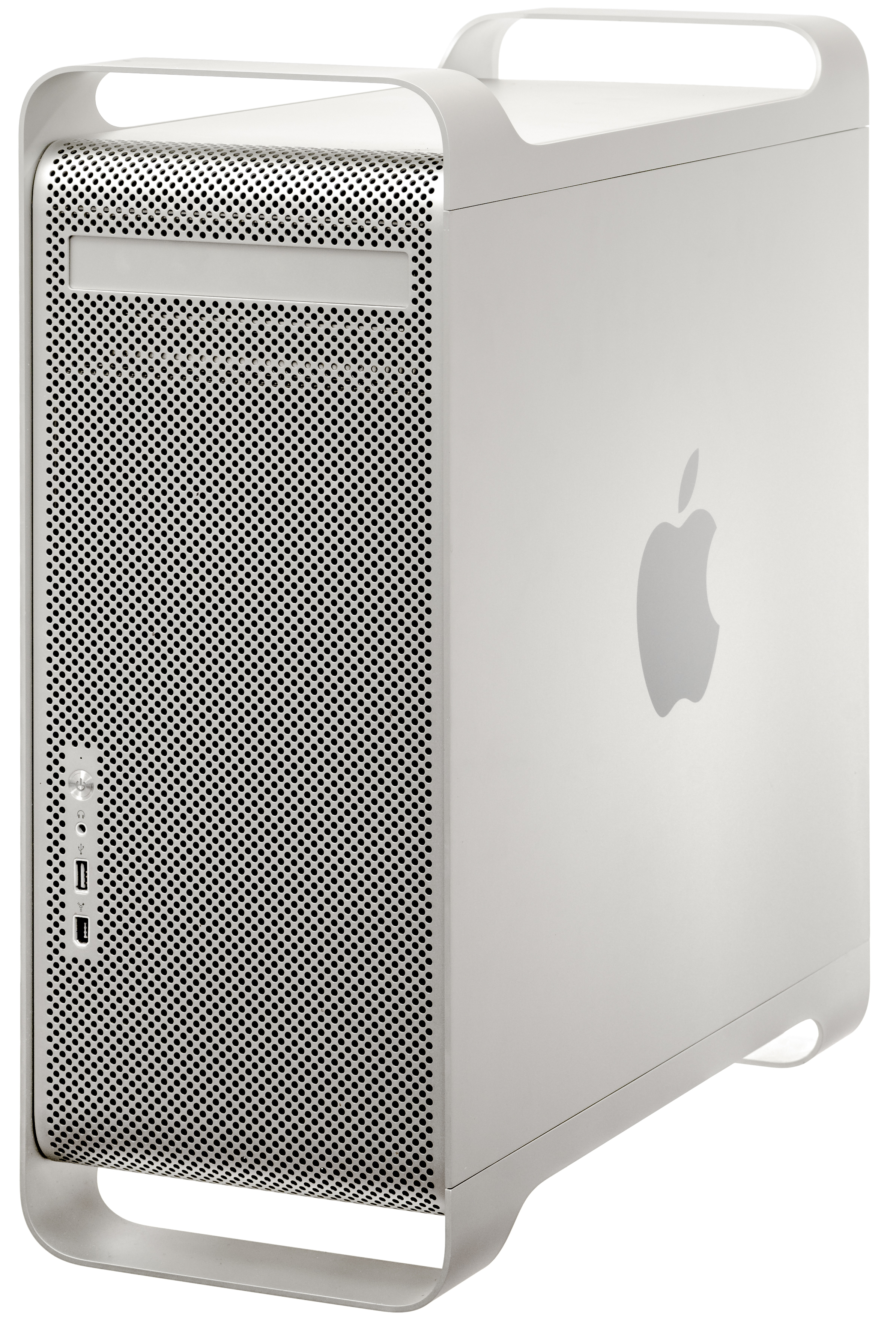|
XTND
XTND was a document import/export system developed by Claris for their products on the Apple Macintosh. Products supporting XTND placed an additional popup menu in the open and save dialogs, allowing users to read and write documents of any supported format. The name is a four-letter contraction of ''extend'', the Mac using four-letter identifiers in its system resource files. XTND was first introduced in 1989 with MacWrite II, Claris CAD 2.0 and with FileMaker Pro in 1991. The system proved popular and became a major selling point for Claris products, which were otherwise considered somewhat "low end". The system was soon used by a number of other products as well, and became fairly common during the early 1990s. In 1992 Claris gave the system to Apple, who eventually re-branded it as a basic part of the Mac OS known as the Translation Manager. They also added Macintosh Easy Open which offered to open unknown documents using software installed on the machine and converting it u ... [...More Info...] [...Related Items...] OR: [Wikipedia] [Google] [Baidu] |
MacWrite
MacWrite is a discontinued WYSIWYG word processor released along with the first Apple Macintosh systems in 1984. Together with MacPaint, it was one of the two original "killer applications" that propelled the adoption and popularity of the GUI in general, and the Mac in particular. MacWrite was spun off to Claris, which released a major update in 1989 as MacWrite II. A further series of improvements produced 1993's MacWrite Pro, but further improvements were few and far between. By the mid-1990s, MacWrite was no longer a serious contender in the word processing market, development ended around 1995, and it was completely discontinued in 1998 due to dwindling sales. History Development When the Mac was first being created, it was clear that users would interact with it differently from other personal computers. Typical computers of the era booted into text-only disk operating system or BASIC environments, requiring the users to type in commands. Some of these programs may h ... [...More Info...] [...Related Items...] OR: [Wikipedia] [Google] [Baidu] |
AppleWorks
AppleWorks was an integrated office suite containing a word processor, Database#Database_management_system, database, and spreadsheet. It was developed by Rupert Lissner for Apple Inc., Apple Computer, originally for the Apple II and launched in 1984. Many enhancements for AppleWorks were created, the most popular being the TimeOut series from Beagle Bros which extended the life of the Apple II version of AppleWorks. Appleworks was later reworked for the Macintosh platform. AppleWorksGS was developed for the Apple IIGS using the graphical desktop interface instead of the text-based filecard interface of the Apple II. AppleWorksGS was slow and buggy; a planned version 2.0 never materialized. Beagle Bros created a BeagleWorks program that was eventually sold to the Apple subsidiary Claris. ClarisWorks for Mac (computer), Macintosh (1991), and Microsoft Windows, Windows (1993) became a popular program and saw rapid development. Those applications do not share any code with the 8-bit ... [...More Info...] [...Related Items...] OR: [Wikipedia] [Google] [Baidu] |
Claris
Claris International Inc., formerly FileMaker Inc., is a computer software development company formed as a subsidiary company of Apple Inc., Apple Computer (now Apple Inc.) in 1987. It was given the source code and copyrights to several programs that were owned by Apple, notably MacWrite and MacPaint, in order to separate Apple's application software activities from its computer hardware, hardware and operating systems activities. In 1998, the company divested itself of all but its flagship product, and reformed as FileMaker Inc. In 2019, FileMaker Inc. announced at DevCon that it was restoring the Claris brand name. Also in 2019, Claris acquired Italian startup, Stamplay, a cloud-based integration platform which connects web services like Dropbox and Slack without writing code, and announced they would rename their product offering as Claris Connect. The company develops, supports and markets the relational database program FileMaker. The FileMaker Platform is available for t ... [...More Info...] [...Related Items...] OR: [Wikipedia] [Google] [Baidu] |
InCider
Wayne Sanger Green II (September 3, 1922 – September 13, 2013) was an American publisher, writer, and consultant. Green was editor of '' CQ'' magazine before he went on to found '' 73'', ''80 Micro'', ''Byte'', '' CD Review'', ''Cold Fusion'', ''Kilobaud Microcomputing'', '' RUN'', ''InCider'', and ''Pico'', as well as publishing books and running Instant Software. Biography In his editorial in the inaugural issue of ''80 Microcomputing'' he said, "The first magazine I published was in 1952 about amateur radio Teletype. Later I became editor of ''CQ'', a ham radio magazine. I started my own magazine for hams in 1960, that was ''73'' magazine. ''73'' is now the world's largest ham publication, with subscribers in over 200 countries. When MITS put the first microcomputer kit on the market in 1975 I organized and did most of the work to get ''Byte'' magazine started. When I felt there was a need for a magazine aimed at beginners in computing, I started ''Kilobaud Microcompu ... [...More Info...] [...Related Items...] OR: [Wikipedia] [Google] [Baidu] |
WordStar
WordStar is a discontinued word processor application for microcomputers. It was published by MicroPro International and originally written for the CP/M-80 operating system (OS), with later editions added for MS-DOS and other 16-bit computing, 16-bit PC OSes. Rob Barnaby was the sole author of the early versions of the program. Starting with WordStar 4.0, the program was built on new code written principally by Peter Mierau. WordStar dominated the market in the early and mid-1980s, succeeding the market leader Electric Pencil. WordStar was written with as few assumptions as possible about the operating system and machine hardware, allowing it to be easily ported across the many platforms that proliferated in the early 1980s. Because all of these versions had relatively similar commands and controls, users could move between platforms with equal ease. It was already popular when its inclusion with the Osborne 1 portable computer made the program the ''de facto'' standard for mu ... [...More Info...] [...Related Items...] OR: [Wikipedia] [Google] [Baidu] |
WordPerfect
WordPerfect (WP) is a word processing application, now owned by Alludo, with a long history on multiple personal computer platforms. At the height of its popularity in the 1980s and early 1990s, it was the market leader of word processors, displacing the prior market leader WordStar. It was originally developed under contract at Brigham Young University for use on a Data General minicomputer in the late 1970s. The authors retained the rights to the program, forming the Utah-based Satellite Software International (SSI) in 1979 to sell it; the program first came to market under the name SSI*WP in March 1980. It then moved to the MS-DOS operating system in 1982, by which time the name WordPerfect was in use, and several greatly updated versions quickly followed. The application's feature list was considerably more advanced than its main competition WordStar. Satellite Software International changed its name to WordPerfect Corporation in 1985. WordPerfect gained praise for its "loo ... [...More Info...] [...Related Items...] OR: [Wikipedia] [Google] [Baidu] |
WriteNow
WriteNow is a word processor application for the original Apple Macintosh and later computers in the NeXT product line. The application is one of two word processors that were first developed with the goal that they be available at the time of the Mac product launch in 1984, and was the primary word processor for computers manufactured by NeXT. WriteNow was purchased from T/Maker by WordStar in 1993, but shortly after that, WordStar merged with SoftKey, which ultimately led to its discontinuation. It had a combination of powerful features, excellent performance, and small system requirements. History WriteNow was written for Apple Computer, Inc., by John Anderson and Bill Tschumy in Seattle, separate from the Macintosh computer and MacWrite word processor development teams. Steve Jobs was concerned that those programming MacWrite were not going to be ready for the 1984 release date of the Macintosh; Apple Computer therefore commissioned a team of programmers, friends of Ap ... [...More Info...] [...Related Items...] OR: [Wikipedia] [Google] [Baidu] |
Microsoft Word
Microsoft Word is a word processor program, word processing program developed by Microsoft. It was first released on October 25, 1983, under the name Multi-Tool Word for Xenix systems. Subsequent versions were later written for several other platforms including IBM PCs running DOS (1983), Apple Macintosh running the Classic Mac OS (1985), AT&T UNIX PC (1985), Atari ST (1988), OS/2 (1989), Microsoft Windows (1989), SCO Unix (1990), Handheld PC (1996), Pocket PC (2000), macOS (2001), Web browsers (2010), iOS (2014), and Android (operating system), Android (2015). Microsoft Word has been the ''de facto'' standard word processing software since the 1990s when it eclipsed WordPerfect. Commercial versions of Word are licensed as a standalone product or as a component of Microsoft Office, which can be purchased with a perpetual license, as part of the Microsoft 365 suite as a Software as a service, subscription, or as a one-time purchase with Office 2024. History In 1981, Microsoft ... [...More Info...] [...Related Items...] OR: [Wikipedia] [Google] [Baidu] |
File Transfer Protocol
The File Transfer Protocol (FTP) is a standard communication protocol used for the transfer of computer files from a server to a client on a computer network. FTP is built on a client–server model architecture using separate control and data connections between the client and the server. FTP users may authenticate themselves with a plain-text sign-in protocol, normally in the form of a username and password, but can connect anonymously if the server is configured to allow it. For secure transmission that protects the username and password, and encrypts the content, FTP is often secured with SSL/TLS (FTPS) or replaced with SSH File Transfer Protocol (SFTP). The first FTP client applications were command-line programs developed before operating systems had graphical user interfaces, and are still shipped with most Windows, Unix, and Linux operating systems. Many dedicated FTP clients and automation utilities have since been developed for desktops, servers, mobile d ... [...More Info...] [...Related Items...] OR: [Wikipedia] [Google] [Baidu] |
Power Macintosh
The Power Macintosh, later Power Mac, is a family of personal computers designed, manufactured, and sold by Apple Inc., Apple Computer, Inc as the core of the Mac (computer), Macintosh brand from March 1994 until August 2006. Described by ''Macworld'' as "the most important technical evolution of the Macintosh since the Macintosh II, Mac II debuted in 1987", it is the first computer with the PowerPC CPU architecture, the flagship product of the AIM alliance. Existing software for the Motorola 68040, Motorola 68k processors of previous Macintoshes do not run on it natively, so a Mac 68k emulator is in System 7.1.2. It provides good compatibility, at about two-thirds of the speed of contemporary Macintosh Quadra machines. The Power Macintosh replaced the Quadra and was initially sold in the same enclosures. Over the next twelve years, it evolved through a succession of enclosure designs, a rename to "Power Mac", five major generations of PowerPC chips, and a great deal of press co ... [...More Info...] [...Related Items...] OR: [Wikipedia] [Google] [Baidu] |
Apple Macintosh
Mac is a brand of personal computers designed and marketed by Apple Inc., Apple since 1984. The name is short for Macintosh (its official name until 1999), a reference to the McIntosh (apple), McIntosh apple. The current product lineup includes the MacBook Air and MacBook Pro laptops, and the iMac, Mac Mini, Mac Studio, and Mac Pro desktops. Macs are currently sold with Apple's UNIX-based macOS operating system, which is Proprietary software, not licensed to other manufacturers and exclusively Pre-installed software, bundled with Mac computers. This operating system replaced Apple's original Macintosh operating system, which has variously been named System, Mac OS, and Classic Mac OS. Jef Raskin conceived the Macintosh project in 1979, which was usurped and redefined by Apple co-founder Steve Jobs in 1981. The original Macintosh 128K, Macintosh was launched in January 1984, after Apple's 1984 (advertisement), "1984" advertisement during Super Bowl XVIII. A series of increment ... [...More Info...] [...Related Items...] OR: [Wikipedia] [Google] [Baidu] |






